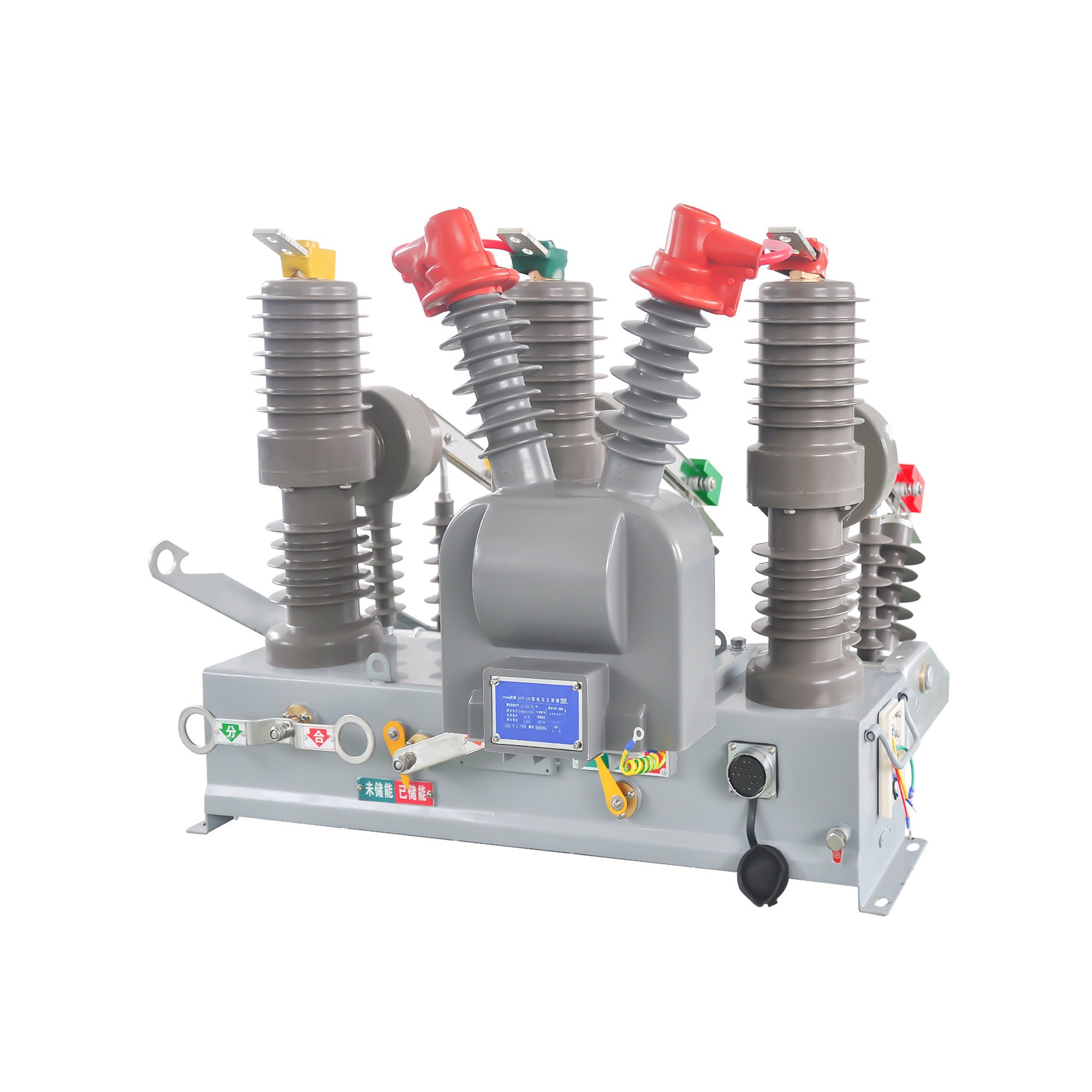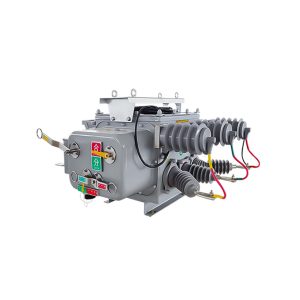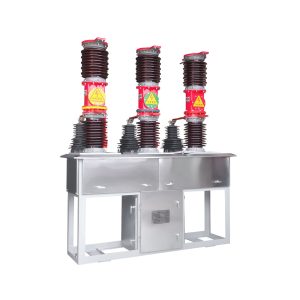Overview
ZW32-40.5 type outdoor high-voltage vacuum circuit breaker adopts a uniquely designed one-piece solid-sealed pole pole and a highly reliable operating mechanism. The device is mainly used in medium voltage overhead line power grids as a means of dividing and closing load currents, overload currents and short circuit currents.
ZW32-40.5 outdoor high voltage vacuum circuit breakers are fully adjusted and sealed at the factory. Cable connector assemblies for switch interconnect wiring will be provided. Accessories such as junction boxes or electronic switching controls are available as options.
Product Features
- Extremely high reliability;
- Completely maintenance-free throughout its entire life;
- High mechanical and electrical life;
- Small size, light weight and easy to install.
Specifications of the electric control
- Control voltage : 220V DC, inner self-supply from capacitor 250V, 22000 Uf ,End user only need to prepare relay main contacts for closing and opening
- Auxiliary voltage: 110V/220V DC, 110V/220V AC optional by clients specify before the order
- Opening time: ≤ 8ms (Each switch will along with ex-work test record)
- Closing time: ≤ 11ms(Each switch will along with ex-work test record)
- Recommended control pulse time: 0.1s
How the Circuit Breaker Woks
Arc extinguishing principle:
ZW32-40.5 type outdoor high-voltage vacuum circuit breaker adopts vacuum arc extinguishing chamber, using vacuum as the arc extinguishing and insulating medium, with extremely high vacuum degree.
When the movable and static contacts are energized under the action of the operating mechanism to open the gate, a vacuum arc will be generated between the contacts, and at the same time, due to the special structure of the contacts, a proper longitudinal magnetic field will be generated in the gap of the contacts, which will prompt the vacuum arc to remain as a diffusion type and make the arc uniformly distributed on the surface of the contacts to burn and maintain a low arc voltage.
In the current naturally over zero, the residual ions, electrons and metal vapor in microseconds order of magnitude time can be compounded or cohesion in the contact surface and shielding, arc extinguishing chamber fracture dielectric insulation strength is quickly restored, so that the arc is quenched to achieve the purpose of breaking.
Due to the use of longitudinal magnetic field control vacuum arc, so the vacuum circuit breaker has a strong and stable breaking current capacity.
Electric energy storage:
The electric motor applies the output torque to the pinion gear of the mechanism and drives it to the large sprocket on the main shaft, thus driving the crutch arm to rotate and make the closing spring store energy. When the screw on the arm presses down the travel switch, the power supply of the motor is cut off and the spring energy storage is completed.
Manual energy storage:
Rotate the output shaft of the mechanism and transfer the rotating torque through the pinion gear on the output shaft to the large gear which is fully meshed with the pinion gear, thus rotating the arm and storing the energy of the closing spring.
Closing solenoid operation: After the mechanism receives the closing signal, the closing spring is energized.
After the mechanism receives the closing signal, the moving iron center of the closing solenoid moves upward to . Upward movement, push the closing brake release lever upward movement, so that the closing half-axis counterclockwise rotation. Release the constraints on the closing bonnet, at the same time, the closing bonnet by the roller pressure and counterclockwise rotation, lifting the energy storage to maintain, located in the main shaft of the cam due to the contraction of the closing spring force generated by the impact of the impact on the manual energy storage shaft (i.e., the output shaft) on the rocker arm, through the connecting rod drive to the switch, thus completing the operation of closing the circuit breaker.
Manual operation:
When the fork mounted on the closing half-axis rotates counterclockwise, it drives the closing half-axis to rotate in the counterclockwise direction. This produces the same effect as the closing solenoid operation.
Reclosing operation:
After releasing the energy of the energy storage spring, the mechanism completes the reclosing operation. In the closing state, the mechanism carries out the energy storage operation again, and after completing the energy storage operation, the mechanism is in the state of reclosing and energy storage, and in this state – once receiving the correct signal, the mechanism can realize – the automatic reclosing operation.
Splitting solenoid operation:
When the mechanism receives the signal to open the gate, the moving iron center of the sliding solenoid moves upward and pushes the sliding detent lever to move upward, causing the sliding half-axis to rotate in the counterclockwise direction. Release the constraints on the slammer. At the same time, the gate bonnet is compressed by the roller and rotates counterclockwise, and the rocker arm is rotated counterclockwise by the thrust of the spring inside the switch, thus completing the gate operation.
Overcurrent release operation:
When the overcurrent coil in the overcurrent detent passes the specified detent current, the solenoid operates and the push rod pushes the detent lever. The half-axis of the shunt rotates in counterclockwise direction, releasing the constraint of the shunt belt, thus producing the same effect as that of the shunt solenoid operation, and completing the overcurrent release operation of the circuit breaker.




